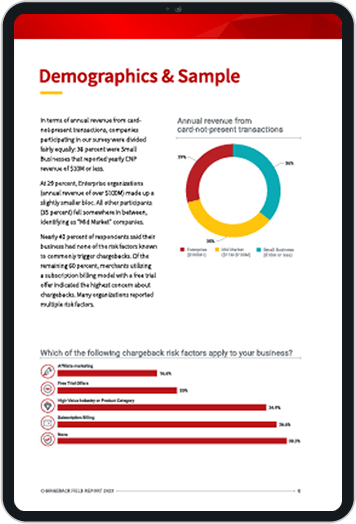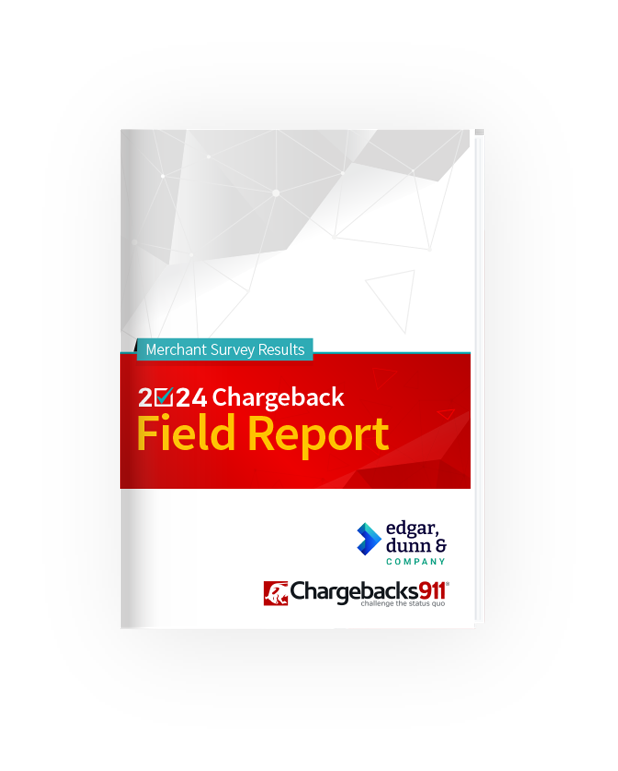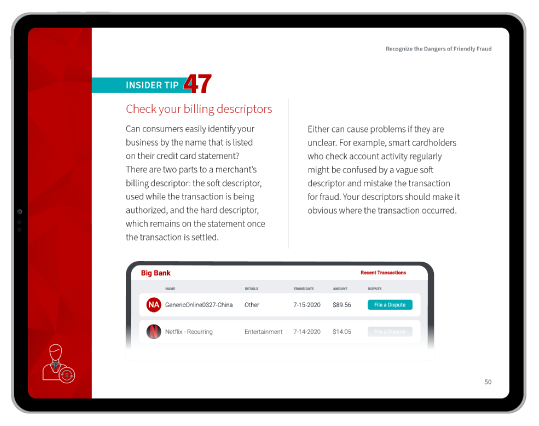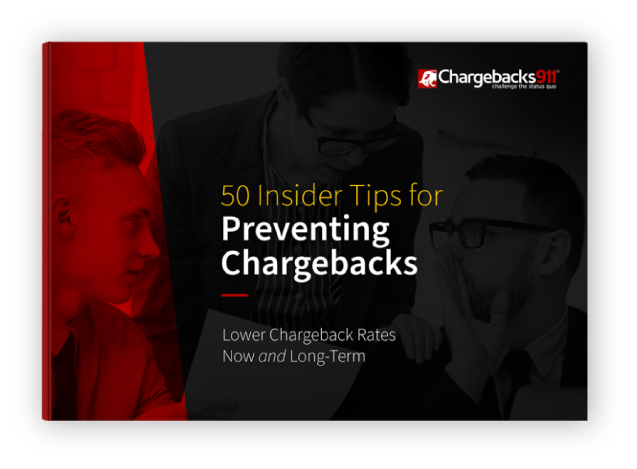Standard vs. High-Risk Processing: How Do They Compare?
Ever feel like you’re paying more for your credit card processing than other merchants? There might be a reason for that.
In the world of credit card processing, there’s “high risk,” and then there's everybody else. Certain factors get you slapped with a “high-risk” label. That will bring fun perks like higher fees, more restrictions, and limited provider options.
Some merchants offering subscriptions or dealing with high-ticket items may be considered high-risk just because of their business model. Others may find themselves stuck in the high-risk trap for a different reason (usually excessive chargebacks).
In this post, we’re discussing the pros and cons of high-risk credit processing. We’ll also hook you up with a list of top-rated high-risk payment processors of 2025, which should help you find the best fit for your business.
Recommended reading
- Chargeback Thresholds: How Many is Too Many Chargebacks?
- High-Risk Merchant Accounts: The Best Providers of 2025
- Visa Dispute Monitoring Program: What is the VDMP?
- What are Merchant Monitoring Programs? Why Do They Exist?
- Chargeback MATCH List | How it Works & How to Avoid Blackist
- What is the Amex Fraud Full Recourse Program?
Learn more about high-risk accounts
What Makes a Business “High Risk?”
Being branded a high-risk merchant doesn’t mean your business is untrustworthy, nor that customers should shy away from you. What it does mean is that the entities who proved credit card processing expect to see a higher rate of disputes filed against your store. The reasons could vary, including:
- Your industry or vertical
- The types of products or services you sell
- You business model (subscription-based, for example)
- Average dollar amount of sales
- The country or regions where you do business
Any of these factors can make your business more prone to chargebacks. On the other hand, merchants with a history of excessive chargebacks can also be deemed high risk, regardless of product vertical or business type. Their chargebacks can be due to anything from internal policy errors to friendly fraud.
Even things like your business’s credit score or how long you have been in business can also have an impact. To the processor, the source of your potential future chargebacks is immaterial. Risk is solely estimated based on how many chargebacks they expect you to have.
See a partial list of high-risk verticalsPros & Cons of High-Risk Credit Card Processing

We’re not saying that high-risk processing is desirable, per se. Becoming a high-risk merchant shouldn’t be a business goal or anything.
What we are saying is that using a high-risk processor can be a viable path forward. In some cases, it may be the only option available, but in other situations, it can be a highly profitable way to conduct business. That’s why many eCommerce merchants actually prefer it over conventional payment processing.
How do you know which is best for you? Let’s look at some of the pros and cons of working with high-risk credit card processing companies. This will give you a better impression of what to expect:
Pro
Global Expansion
Standard processors can restrain or prohibit merchants from transacting in multiple currencies. They may also restrict you from selling to customers outside of regions like the United States or Western Europe.
The earning potential tied to international sales can make high-risk credit card processing seem more appealing.
Con
Higher Service Costs
All processors work on the assumption that high-risk clients will inevitably produce more chargebacks. They may require higher setup charges and impose larger monthly fees to offset this risk. The ongoing cost of processing will also be more than what merchants would otherwise pay.
These excessive charges can make high-risk processing less appealing.
Pro
Billing Flexibility
Processors can limit the amount of revenue standard merchants generate via subscription billing. They can also set limits on the types of products or restrict high-ticket sales.
In contrast, high-risk processors can allow for increased flexibility in billing practices.
Con
Merchant Account Reserves
Many high-risk payment processors require a merchant account reserve. This is a non-interest-bearing savings account used by the acquiring bank as a type of insurance against chargebacks.
Merchants won't be able to access the money in reserve until 180 days after the initial transaction. This delay can make high-risk business untenable, even without chargebacks.
Pro
More Business Types
There is a long list of products and services that credit card networks see as too risky for standard merchants. Many travel, telemarketing, gaming, tobacco, and pharmacy businesses will be prevented from working with a traditional credit card processor.
With a high-risk merchant account, however, you can sell products in just about any merchant category code (MCC).
Con
Reputational Damage
Working with a high-risk payment processor may be your best option, but you should use caution when deciding to go this route. If your business is labeled "high-risk" due to excessive chargeback issuances, you may be unable to engage with traditional payment service providers in the future.
Merchants who use a high-risk processor can often maintain a higher chargeback ratio without risking the loss of their processing. This can be appealing to merchants who have a higher-than-average chargeback liability.
Pro
Higher Chargeback Threshold
Standard merchants must keep their chargeback issuances within a narrow, acceptable range. Otherwise, they could lose their ability to process payments, and can end up on the MATCH List.
The earning potential tied to international sales can make high-risk credit card processing seem more appealing.
Con
Higher Chargeback Fees
A high-risk payment processor may be willing to work with merchants with high chargeback rates, but this willingness comes at a cost. The processor will usually assess higher fees for each individual dispute.
These fees add up quickly and are a major disadvantage of high-risk processing.
Standard vs. High-Risk Processing: A Side-by-Side Comparison
Standard and high-risk payment processors differ in terms of brand recognition, fees, underwriting, account restrictions, and more. Here’s how they compare:
Do You Qualify for High-Risk Processing?
Payment processors are free to set their own eligibility criteria, so it’s difficult to say with certainty whether you’ll qualify for a low-risk or high-risk account.
That said, if you’re on market for a new merchant account, there are some rough guidelines you can follow to see where you might stand. Consider the following questions:
#1 | How Long Have You Been in Business for?
Standard Payment Processing: Established business with a payment processing history of at least 6 months
High-Risk Payment Processing: New business with no payment processing history
The longer you’ve been operating, the more stable your business is perceived to be.
You're more likely to qualify for low-risk providers if you have a payment processing history of at least 6 months; ideally, more than a year. On the other hand, if you’re a new business, or if you don’t have a track record of successful processing, you may have to opt for high-risk payment processing instead.
#2 | What’s Your Credit Score?
Standard Payment Processing: 580 or above; ideally greater than 630
High-Risk Payment Processing: Below 580
If you have less-than-stellar credit, you may have to go with a high-risk processor. That’s because a subprime credit score signals non-payment risks or cash flow issues. For example, applicants with low credit scores may lack the funds necessary to cover payment reversals such as chargebacks, which could lead to risky negative account balances and overdrafts.
On the other hand, merchants with higher credit scores may qualify for standard payment processing services because they are perceived as less risky.
#3 | How much stuff do you sell?
Standard Payment Processing: Under $20,000 per month
High-Risk Payment Processing: Over $20,000 per month
Payment processors assess the sales volume of a business to determine how susceptible they are to fraud risks. Larger businesses with higher transaction volumes naturally contend with more chargebacks and fraud, so these merchants may be considered high risk.
By contrast, small businesses with low transaction volumes typically contend with fewer chargebacks because they process fewer transactions. As a result, smaller merchants may have an easier time qualifying for low-risk accounts.
#4 | What Industry Are You In?
Standard Payment Processing: Low-risk industries, such as online apparel, fast food, office supplies, auto parts stores, moving companies, or household goods
High-Risk Payment Processing: High-risk industries, such as credit repair, debt collection, cannabis stores, firearm vendors, or telemarketing services
Your vertical alone can determine whether you’re low or high-risk. According to the 2024 Chargeback Field Report, being in a high-risk industry, such as adult entertainment, subscription services, travel, and gambling, is roughly tied with subscription billing as the number one chargeback risk factor.
On the other hand, if you operate in a low-risk industry, like retail, consulting, or business-to-government (B2G) services, you typically face fewer chargeback and fraud risks and may be able to qualify for standard processing.
#5 | How Many Chargebacks Do You Get?
Standard Payment Processing: Chargeback ratio below 0.9%; ideally below 0.65%
High-Risk Payment Processing: Chargeback ratio of 0.9% or more
Payment processors use your chargeback ratio as a key fraud risk indicator. If more than 0.9% of your transactions result in chargebacks, processors may suspect that you don’t have sufficient fraud detection and prevention measures in place. Or, that you offer poor customer service, or have unresolved operational errors. As a result, you may be forced to sign up for high-risk processing.
If you can manage to keep your chargeback-to-transaction ratio below 0.9% — and ideally 0.65% — you can signal to processors that you’re able to prevent and manage disputes effectively. Because of this, you may be eligible for standard processing.
#6 | Have You Ever Faced Account Closure?
Standard Payment Processing: No
High-Risk Payment Processing: Yes, you’ve had your merchant account closed or are on the MATCH list
Payment processors may be reluctant to work with merchants who have previously faced account closure due to concerns regarding fraud, chargebacks, or regulatory compliance. Some high-risk processors may still take you on as a client, though.
Meanwhile, if you’ve never faced account closure and can check all the other low-risk boxes, you’re more likely to qualify for standard processing.
How to Choose the Right High-Risk Credit Card Processor
The right credit card processor can make or break your business. Before settling on a high-risk processor, consider the vendor’s:
Selecting the right service provider requires careful consideration. We’ve compiled a list of some of the best service providers of 2025 to help you start your search. Click here to view the list.
Fewer Chargebacks = Lower Fees
High-risk payment processing services aren’t all bad: they’re easier to qualify for and are more welcoming to merchants from certain industries.
If you operate in a highly-regulated vertical, have a less-than-stellar credit score, or have never accepted credit or debit card payments before, high-risk processing may be your best (or even only) bet.
Of course, the higher fees and restrictive contracts that high-risk providers come with aren’t ideal. But if you’re faced with a choice between a high-risk processor and not being able to accept credit or debit cards at all… then by all means opt for a high-risk account.
But, what if you’re being turned away by standard account providers simply because you’re dealing with excessive chargebacks? If that’s your situation, you could be paying thousands of dollars in card processing fees due to a temporary — and very solvable — problem.
By lowering your chargeback ratio to an acceptable level and qualifying for low-risk processing, you could unlock lower processing rates, more flexible contract terms, and more forgiving administrative fees for chargebacks that do come your way.
At Chargebacks911®, our dual-layered chargeback prevention and representment solution can help you keep friendly fraud disputes at bay, allowing you to become eligible for low-risk processing services. Want to see how much you could save? Contact us for a no-obligation ROI analysis today.
FAQs
How much does a high risk payment processor charge?
Individual rates depend on the processor, but most high-risk merchants will pay 0.5% to 1% higher than low-risk businesses. The average high-risk processing rates range from 2% to 10% or more per transaction. Providers may also charge a $10 to $50 monthly fee for high-risk accounts, and rates could fluctuate depending on the perceived risk level.
What are the disadvantages of a high-risk merchant account?
Downsides of using a high-risk merchant account include higher processing costs, required account holds or rolling reserves, and increased compliance and regulatory restrictions. Chargebacks and customer disputes may be more common in high-risk businesses, and the choices for providers will be limited.
What makes a merchant high-risk?
The high-risk label can come from a number of factors, including high transaction volume, high average ticket size, or low credit score. You may also have a historically high chargeback ratio or high potential for credit card fraud. Limited business operating history could also be a factor.
What is high-risk credit card processing?
High-risk credit card processing services are provided by specialized financial institutions that cater to merchants who operate in a risky industry, or who have a history of excessive chargebacks. High-risk credit card processing services cost more than standard services and may require merchants to establish account reserves.
How much does a high-risk merchant account cost?
Fees for high-risk merchant accounts vary, but processing fees typically range from 2.5% to more than 5% of transaction volume and are usually up to 1 percentage points higher than processing fees associated with standard, low-risk merchant accounts. Additional costs include monthly fees and higher-than-standard chargeback fees.
What is considered a high-risk transaction?
A transaction is deemed “high risk” when it carries an elevated risk of fraud or loss. For example, a transaction that has a high likelihood of turning into a chargeback may be considered high-risk. Typically, international transactions, high dollar volume purchases, cash advances, card-not-present transactions, and payments for certain goods or services (e.g. e-cigarettes, poker chips, adult products, credit repair services, etc.) are considered high risk.
What is Level 3 credit card processing?
Level 3 credit card processing allows large companies that transact with other businesses or the government to save on credit card processing fees. To qualify for Level 3 processing, merchants must provide their payment processors with extra data, including invoice numbers, product codes, tax IDs, line-item breakdowns of goods and services provided, and transaction-specific data.
What is the average merchant processing fee?
On average, merchant processing fees range between 1.5% to 3.5% of a transaction. Processing rates are usually structured as a percentage plus a flat rate, so an exact fee may be 2.9% of the transaction value plus $0.30 per transaction.
















